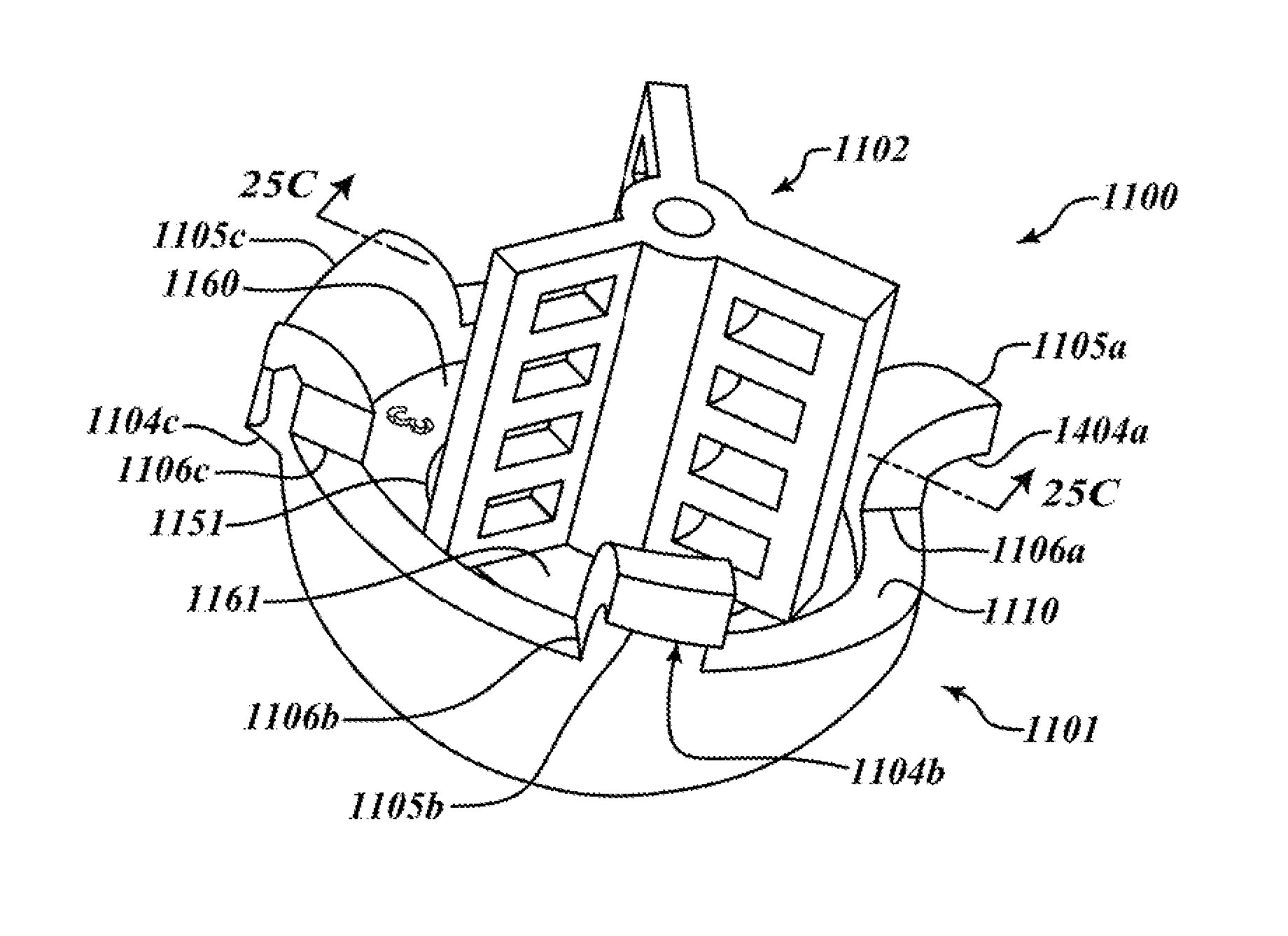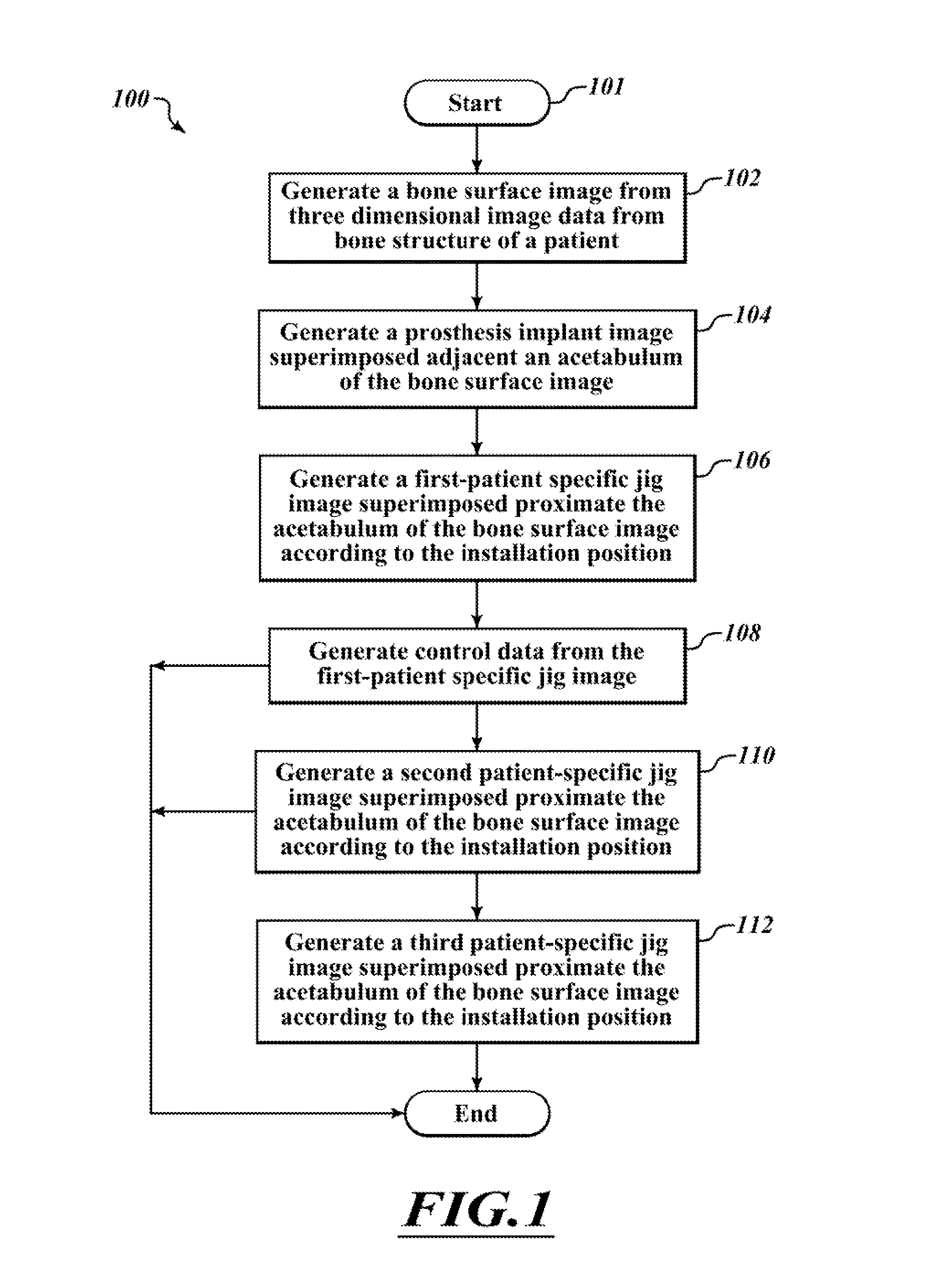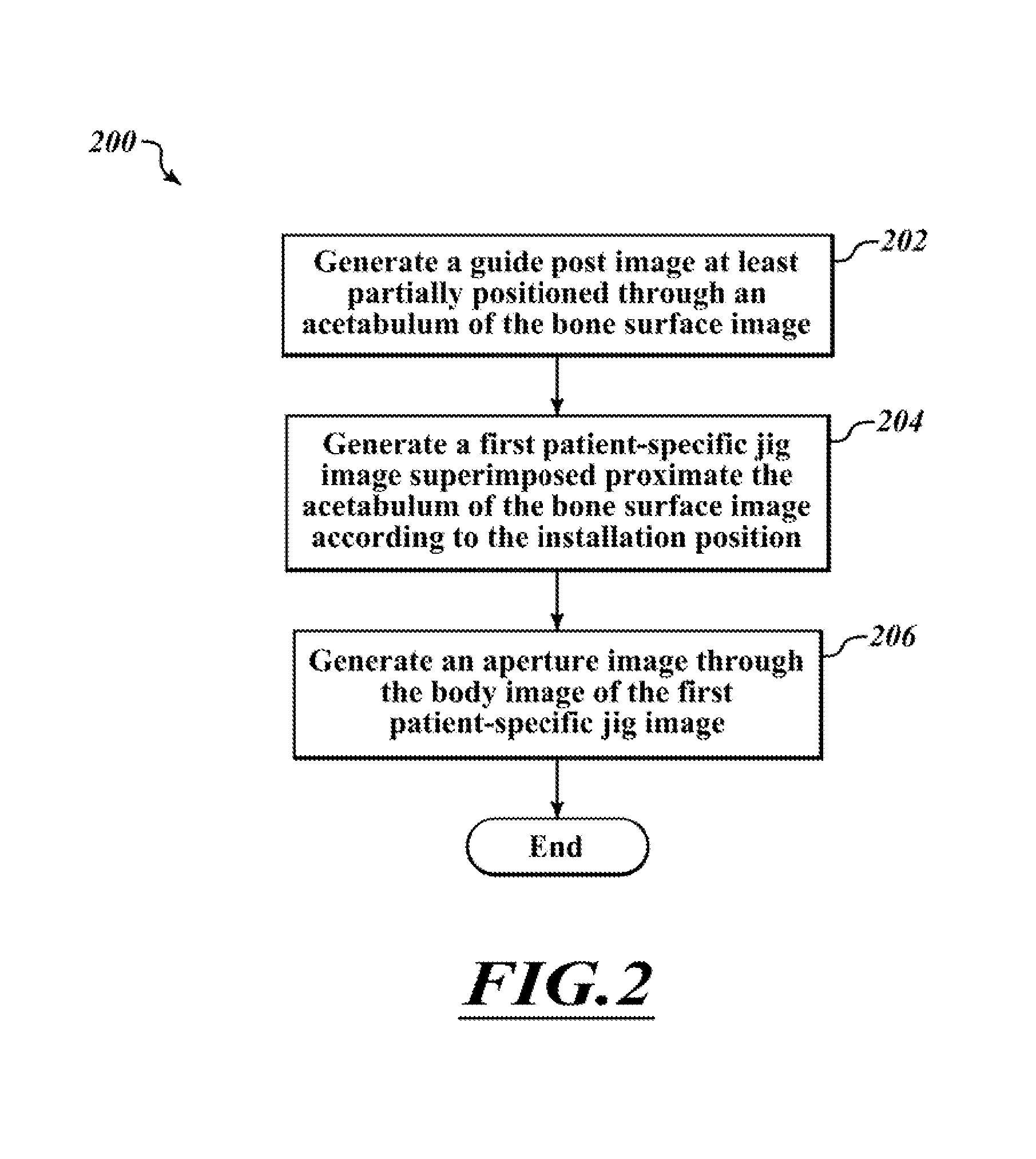Devices and methods for hip replacement
a hip replacement and device technology, applied in the field of patient-specific hip replacement devices, can solve the problems of premature wear of bearing surfaces, insufficient installation and insufficient placement of prosthetic acetabular cups
- Summary
- Abstract
- Description
- Claims
- Application Information
AI Technical Summary
Benefits of technology
Problems solved by technology
Method used
Image
Examples
Embodiment Construction
[0056]As mentioned above, the methods and systems of the present invention are based at least in part on pre-operating (pre-operative) imaging and at least in part on orthopedic surgical procedures based upon the pre-operative methods and systems. As is understood in the art, pre-operative imaging has a number of different purposes and generally is performed in order to subsequently guide the surgeon during the surgical procedure, allow for patient-specific tools and / or implants to be formed, etc. The present disclosure is part of a system for designing and constructing one or more patient-specific jigs for use in an orthopedic surgical procedure in which an acetabular component is prepared, orientated and implanted. The referenced systems and methods are now described more fully with reference to the accompanying drawings, in which one or more illustrated embodiments and / or arrangements of the systems and methods are shown. Aspects of the present systems and methods can take the fo...
PUM
 Login to View More
Login to View More Abstract
Description
Claims
Application Information
 Login to View More
Login to View More - R&D
- Intellectual Property
- Life Sciences
- Materials
- Tech Scout
- Unparalleled Data Quality
- Higher Quality Content
- 60% Fewer Hallucinations
Browse by: Latest US Patents, China's latest patents, Technical Efficacy Thesaurus, Application Domain, Technology Topic, Popular Technical Reports.
© 2025 PatSnap. All rights reserved.Legal|Privacy policy|Modern Slavery Act Transparency Statement|Sitemap|About US| Contact US: help@patsnap.com



